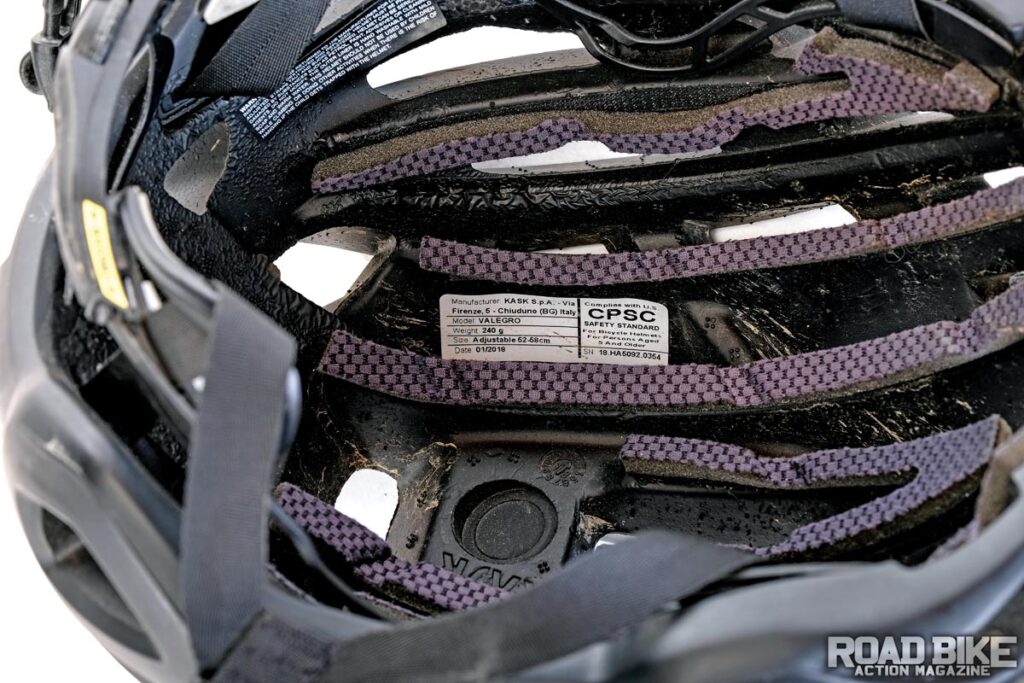Yes, bicycle helmets do expire. Most manufacturers recommend replacing helmets every 3-5 years.
Bicycle helmets play a crucial role in protecting cyclists from head injuries. Over time, the materials in helmets can degrade, reducing their effectiveness. Factors like exposure to sunlight, sweat, and impacts can accelerate this process. It’s essential to check the manufacturer’s guidelines for the specific lifespan of your helmet.
Regularly inspecting your helmet for cracks, wear, and other signs of damage is also important. Ensuring your helmet is in good condition can provide peace of mind and enhance safety. Remember, an expired helmet might not offer adequate protection in the event of an accident. Prioritize your safety by keeping your helmet up-to-date.

Credit: roadbikeaction.com
Introduction To Bicycle Helmets
Bicycle helmets are essential safety gear for all cyclists. They protect your head during accidents. Helmets reduce the risk of serious injury. But do bicycle helmets expire?
Importance Of Helmets
Helmets are crucial for safety. They absorb impact during crashes. This can save your life.
Wearing a helmet lowers the risk of head injuries. It is a simple step to stay safe. All cyclists should wear helmets.
Common Misconceptions
Some think helmets last forever. This is not true. Helmets do have a lifespan.
Others believe expensive helmets are always better. Price does not always equal safety. Proper fit and condition are more important.
There is also a myth that old helmets are still safe. Over time, materials degrade. This makes old helmets less effective.
| Misconception | Reality |
|---|---|
| Helmets last forever | They have a lifespan |
| Expensive helmets are better | Proper fit and condition matter more |
| Old helmets are still safe | Materials degrade over time |
- Always wear a helmet when cycling.
- Check your helmet’s condition regularly.
- Replace your helmet if it’s damaged or old.
- Wear a helmet every ride.
- Ensure your helmet fits well.
- Replace helmets after any crash.

Credit: m.youtube.com
Lifespan Of A Bicycle Helmet
Bicycle helmets are crucial for safety. But how long do they last? Understanding the lifespan of a bicycle helmet can help ensure you remain protected on the road.
Factors Affecting Lifespan
Several factors affect a bicycle helmet’s lifespan. These include:
- Material Quality: Helmets made of high-quality materials last longer.
- Usage Frequency: Frequent use can wear out a helmet faster.
- Exposure to Elements: Sun, rain, and sweat can degrade materials.
- Impact Damage: Even minor accidents can reduce a helmet’s effectiveness.
Manufacturer Recommendations
Manufacturers provide guidelines on helmet lifespan. Most suggest replacing helmets every 3 to 5 years. This recommendation accounts for:
- Material wear and tear.
- Technological advancements in helmet safety.
- Potential unnoticed damage.
Always check your helmet’s user manual for specific advice. Regularly inspect your helmet for visible damage. Replace it immediately if you notice any cracks or dents.
Materials And Wear
Bicycle helmets are crucial for safety. But do they expire? The answer lies in the materials and wear. Over time, materials degrade, reducing their effectiveness.
Foam Deterioration
The foam inside a helmet is vital. It absorbs impact during a crash. Expanded polystyrene (EPS) foam is commonly used. Over time, this foam can deteriorate.
Factors causing deterioration include:
- Exposure to sunlight
- Temperature changes
- Moisture absorption
These factors make the foam less effective. Regularly check your helmet’s foam for cracks or softness.
Shell Durability
The helmet’s outer shell protects the foam. It guards against punctures and minor impacts. Polycarbonate and ABS plastic are common materials used.
Shell durability can decrease due to:
- UV exposure
- Frequent impacts
- Harsh chemicals
Inspect the shell for any visible damage. Look for cracks, dents, or discoloration.
Regular inspections ensure your helmet remains effective. Replace it if you notice any damage. Safety always comes first.
Signs Your Helmet Needs Replacing
A bicycle helmet is crucial for safety. But even the best helmets don’t last forever. Over time, they can degrade and lose their protective capabilities. Knowing the signs your helmet needs replacing can keep you safe on the road.
Visible Damage
Inspect your helmet for any visible cracks or dents. The outer shell should be smooth and free of blemishes. If you see any damage, it’s time for a new helmet.
Check the inner foam for compression or crumbling. The foam should be firm and intact. Soft spots or cracks mean the helmet can’t protect you well.
Look for any missing parts. The visor, padding, or other attachments should be secure. Missing parts can affect the helmet’s performance.
Strap And Buckle Issues
Examine the straps for fraying or tearing. The straps should be strong and secure. Damaged straps might not hold the helmet in place during a crash.
Test the buckle to ensure it clicks securely. A loose or broken buckle won’t keep the helmet on your head. If the buckle doesn’t work, replace the helmet immediately.
Check for any adjustments that don’t stay tight. Loose straps can make the helmet fit poorly. A well-fitting helmet is essential for protection.
Impact Of Accidents On Helmets
Bicycle helmets are essential for safety. But accidents can weaken them. This section covers how crashes impact helmets and what to do after.
Post-crash Inspection
After an accident, inspect your helmet carefully. Look for visible cracks or dents. These are signs of damage. Even small cracks can reduce protection. Check the foam inside the helmet. If it feels soft, it might be compromised.
| Inspection Area | What to Look For |
|---|---|
| Outer Shell | Cracks, dents, or scratches |
| Inner Foam | Soft spots, compression, or cracks |
| Straps and Buckles | Fraying, tears, or broken parts |
Replacement After Impact
Replace your helmet after a significant impact. Even if it looks fine, internal damage may not be visible. Safety experts advise getting a new helmet after any crash.
Here’s a quick guide for replacement:
- Check for visible damage.
- Feel the foam for softness.
- Examine straps and buckles.
- Replace if any damage is found.
Remember, your helmet protects your head. Don’t take chances. Safety is the top priority.
Storage And Maintenance
Proper care of your bicycle helmet ensures its longevity and effectiveness. By focusing on storage and maintenance, you can extend the life of your helmet. This section will cover the best practices for storing and maintaining your bicycle helmet.
Proper Storage Conditions
Storing your bicycle helmet correctly is essential. Follow these simple tips:
- Keep it in a cool, dry place. Excess heat can damage the helmet.
- Avoid direct sunlight. Sunlight can weaken the helmet material over time.
- Do not hang it by the straps. This can distort the straps and affect the fit.
Consider using a storage bag. A storage bag can protect your helmet from dust and impacts.
Cleaning Tips
Regular cleaning keeps your helmet fresh and in good condition. Here’s how to clean your helmet properly:
- Remove the pads. Most helmets have removable pads.
- Use mild soap and water. Avoid harsh chemicals that can damage the helmet.
- Gently scrub the shell. Use a soft cloth or sponge.
- Rinse thoroughly. Make sure no soap residue remains.
- Air dry completely. Do not use a hairdryer or place it in direct sunlight.
Regularly inspect the helmet for cracks or damage. Replace any worn-out parts immediately.
| Storage Tips | Cleaning Tips |
|---|---|
| Keep in a cool, dry place | Use mild soap and water |
| Avoid direct sunlight | Gently scrub the shell |
| Do not hang by straps | Air dry completely |
Buying A New Helmet
When it’s time to buy a new bicycle helmet, many factors should be considered. A helmet is a crucial safety gear for cyclists. Ensuring you choose the right one can make a significant difference.
What To Look For
When buying a new helmet, consider the fit, comfort, and ventilation. A well-fitting helmet should sit snugly on your head without being tight. Measure your head circumference and match it with the helmet’s size chart.
Comfort is essential for long rides. Look for helmets with adjustable straps and padding. Good ventilation keeps your head cool. Helmets with multiple vents allow air to flow through easily.
Style and color can be personal choices. Some prefer bright colors for visibility. Others may want a sleek design. Always prioritize safety features over aesthetics.
Certification Standards
Ensure your helmet meets certification standards for safety. In the US, look for CPSC (Consumer Product Safety Commission) certification. This ensures the helmet meets minimum safety requirements.
In Europe, check for CE (Conformité Européenne) mark. This indicates the helmet conforms to health, safety, and environmental protection standards. Australia and New Zealand use AS/NZS 2063 certification.
It’s essential to buy a helmet from a reputable brand. Brands invest in quality control and rigorous testing. This ensures their products are safe and reliable.
| Region | Certification Standard |
|---|---|
| United States | CPSC |
| Europe | CE |
| Australia/New Zealand | AS/NZS 2063 |
Look for these certifications on the helmet’s label. This ensures you are buying a product that meets safety standards.

Credit: www.nytimes.com
Frequently Asked Questions
Do Bicycle Helmets Have An Expiration Date?
Yes, bicycle helmets do expire. Most manufacturers recommend replacing helmets every 3 to 5 years. Over time, materials degrade, reducing effectiveness.
How Do I Know If My Helmet Is Expired?
Check the label inside your helmet for the manufacturing date. If it’s over 5 years old, consider replacing it for safety.
What Happens If I Use An Old Helmet?
Using an old helmet can be risky. Materials break down, reducing the helmet’s ability to protect you during an impact.
Why Do Bicycle Helmets Expire?
Bicycle helmets expire due to material degradation. UV exposure, sweat, and impacts weaken the materials over time, reducing protection.
Conclusion
Regularly checking your bicycle helmet for wear and tear is crucial. Replace it after any significant impact or every few years. An expired helmet may not provide adequate protection. Prioritizing your safety by ensuring your helmet is in good condition can make all the difference.
Stay safe and enjoy your rides!

